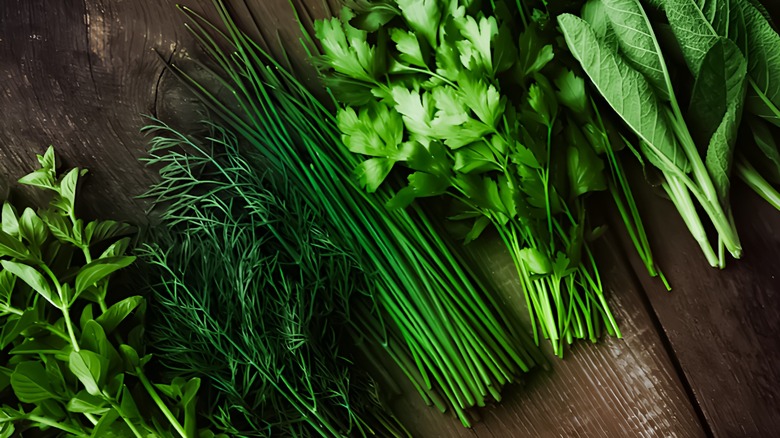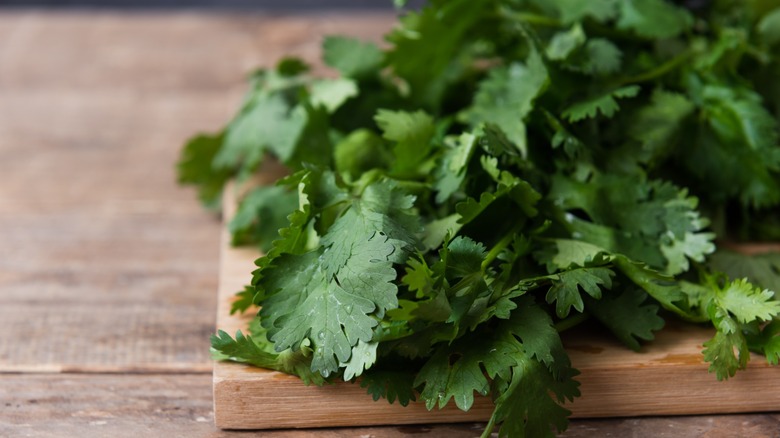America's Favorite Seasoning Herb Is Also The Most Controversial
The West Coast-East Coast divide is real. Fashion, music, cuisine, architecture, beaches, and weather all come in distinct flavors the closer you get to the Atlantic or Pacific. And that also includes the spices and herbs we put on food, according to an Instacart survey. The results of the "Herbs and Spices Showdown" demonstrate yet another key divide that runs almost the length of the Mississippi River — peoples' views on cilantro. This pungent, peppery member of the Apiaceae family, which also includes carrots, celery, and parsley, was ranked the top herb or spice in 17 states, nearly all west of the Mississippi River. In the other states, the top spots were taken by dried garlic (14 states), flat-leaf parsley (seven states), dried basil (five states), chili powder (two states), Thai sweet basil (one state), and a few split decisions.
The herbal divide also spotlights the pro and con camps for cilantro, which has a divisive taste that has long inspired debates. Cilantro haters are particularly vocal, with one Reddit page specifically flipping it the bird and getting cheered on by compatriots who describe the flavor and aroma as things like "rotting leather," "stink bug," "formaldehyde," and "like someone got bitter, gross tasting weeds, off the lawn, and put them in my food." However, reactions like these may not actually be a matter of taste, but of genes. According to scientists researching the polarizing culinary herb, the reason cilantro tastes like soap to some people is due to the presence of a specific olfactory receptor gene in certain individuals.
The confusing history of cilantro in America
Why the east-west cilantro divide exists at all reveals much about the country's history. Colonial and early America drew much of its population from western European countries and cultures, which did not use cilantro — or coriander, as they still prefer to call it — in cooking much. Indeed, it's the one ingredient PBS cooking personality Lidia Bastianich refuses to use. Later migrations to America and the West came more from Southeast Asia, China, India, and Latin America, where cilantro was a staple. These movements are reflected still in the most popular cuisines of these states, and that includes cilantro-forward dishes like Chinese tiger vegetable salad, Egyptian bissara dip, Vietnamese bahn mi, or Mexican mole verde.
This also extends to the language itself. Technically, the difference between cilantro and coriander is that cilantro is the leaf, while coriander is the seed of the same plant. But in Europe, where the seeds were more commonly used — including in medieval and Renaissance love potions — the entire plant is called coriander. Why Americans call it cilantro again goes back to immigration, as "cilantro" is the Spanish word for "coriander." Over time, the word migrated into American English, where it dominates because cilantro is far more common in dishes than coriander, especially in the American West. The difference may offer a bridge to connect lovers and haters, as the two do not taste the same and should not be used interchangeably. More importantly, coriander seeds contain none of the objectionable flavors of cilantro.

